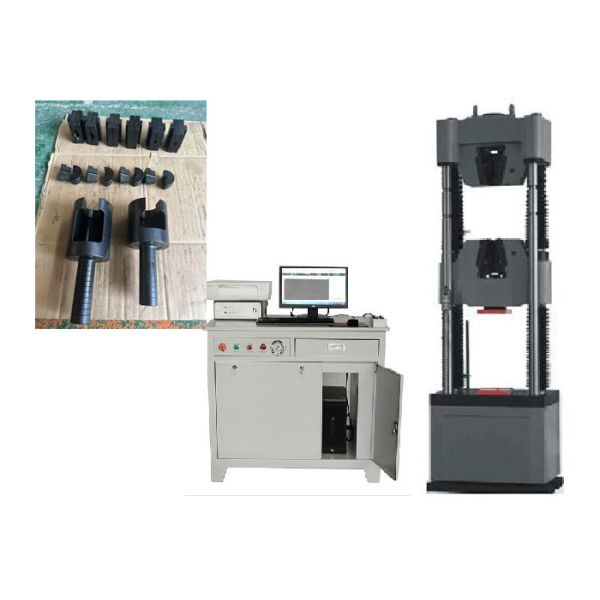Servo Hydraulic Testing Machine for Fracture Toughness Testing with
High Precision Data Measurement and Control System
Summary:
1. Main Machine Structure
The load frame of the Fracture Toughness Tester (Hydraulic
Universal Testing Machine, UTM) consists of two columns, two guide
rails, and an integrated hydraulic cylinder. The tension testing
space is located at the upper section of the main machine, while
the compression and bending testing spaces are positioned between
the lower crosshead and the worktable—ensuring rational space
allocation for diverse test scenarios.
2. Data Measurement & Control System
Equipped with a high-precision A/D converter module, the system
performs real-time acquisition of force, displacement, and
deformation data. It boasts exceptional measurement accuracy and
reliable operational performance, fully complying with GB, ISO,
ASTM, and other international/national standards for tensile,
compression, bending, and shear tests of metal materials.
3. Transmission System
The lower crosshead is driven by a motor via a reducer, chain
transmission mechanism, and lead screw assembly—enabling precise
and smooth position adjustment of the testing space. This design
ensures stable load transmission and accurate control of test
processes, adapting to the size requirements of different test
samples.
Standards:
ISO 6934 BS4449, ASTM C39, ASTM A370, ASTM E4, ASTM E8, ASTME9, ASTMA615, ISO6892, ISO7438, ISO7500-1, ISO 15630 EN10002-4,
GB/T228-2002, GB 16491-2008, HGT3844-2008 QBT 11130-1991, HGT 3849-
2008,GB6349-1986, ASTM C165, EN826, EN1606, EN1607, EN12430 etc.
Principle:
Hydraulic oil stored in the oil tank is delivered into the
hydraulic circuit by a motor-driven high-pressure pump. It
subsequently passes through the high-pressure filter, differential
valve group, and servo valve before entering the hydraulic
cylinder.
The computer transmits precise control signals to the servo valve,
regulating its opening degree and flow direction. This controls the
oil flow rate entering the hydraulic cylinder, thereby realizing
accurate control of test modes such as constant test force rate and
constant displacement rate.
Main technical parameters:
Model | WAW-300D |
Max. test force(kN) | 300KN |
Structure | Two columns two ball screws, oil cylinder down-setting type |
Load range | 2%-100% |
Middle Beam elevating speed (mm/min) | 170 mm/min |
Max. Tensile space (mm) | 700mm |
Max. Compression space (mm) | 600mm |
Piston stroke(mm) | 250mm |
Stranded wire clamping range | Φ6-30mm |
| Flat sample clamping range | 0-15mm |
Power total | 2.2KW |
Compression plate size | Φ120mm |
Bending support roller distance | 300mm |

Packing and Shipping:

Frequently Asked Questions:
Q1: Is your company a trading firm or a manufacturing factory?
A1: We are a factory-integrated trading company—with 18 years of
dedicated expertise in the testing instrument industry and 14 years
of international export experience. We integrate in-house
manufacturing capabilities with global trade services to deliver
end-to-end product and service solutions.
Q2: How can I select the most suitable product?
A2: Our professional technical team will provide optimal tailored
recommendations once you share your specific test requirements
(e.g., test type, material to be tested) and technical
specifications. We base suggestions on your actual application
scenarios to ensure the product fully matches your needs.
Q3: What are your delivery terms?
A3: In most cases, we maintain inventory of standard models for
immediate shipment. For non-stock items, the standard lead time is
15–20 working days upon receipt of the advance payment. If you have
urgent demands, we can arrange priority production to shorten the
delivery cycle as much as possible.
Q4: Do you offer customization services?
A4: Yes, we provide comprehensive customization services. In
addition to standard testing machines, we can develop customized
solutions tailored to your specific requirements—such as modified
technical parameters, specialized fixtures, or custom software
functions. Please feel free to share your detailed needs, and our
R&D and engineering teams will strive to deliver solutions that
align with your operational demands.
















